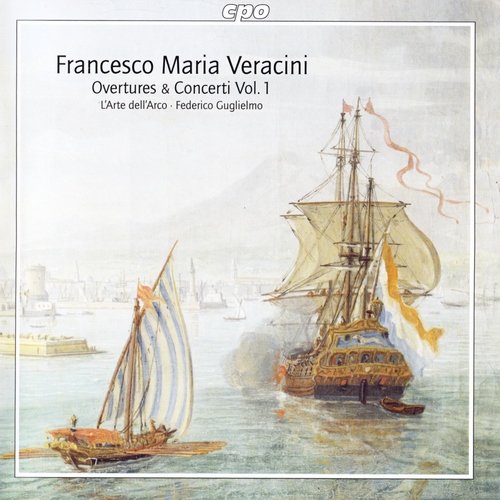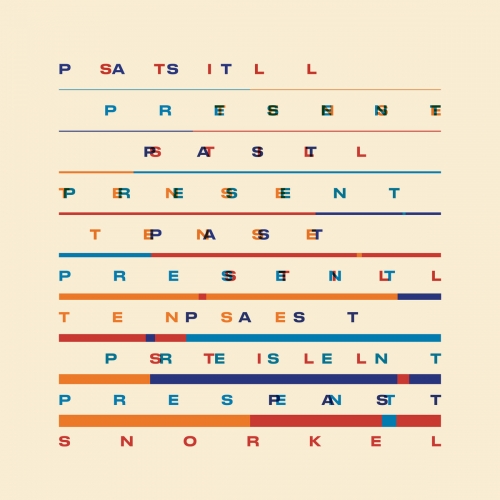L'Arte dell'Arco, Federico Guglielmo - Francesco Veracini: Overtures & Concerti, Vol.1 (2009)

Artist: L'Arte dell'Arco, Federico Guglielmo
Title: Francesco Veracini: Overtures & Concerti, Vol.1
Year Of Release: 2009
Label: CPO
Genre: Classical
Quality: FLAC (image+.cue,log,scans)
Total Time: 59:26
Total Size: 454 Mb
WebSite: Album Preview
Tracklist: Title: Francesco Veracini: Overtures & Concerti, Vol.1
Year Of Release: 2009
Label: CPO
Genre: Classical
Quality: FLAC (image+.cue,log,scans)
Total Time: 59:26
Total Size: 454 Mb
WebSite: Album Preview
Overture VI in G minor:
1 Allegro 03:34
2 Largo 02:17
3 Allegro 02:48
4 Menuet. Allegro 01:52
Sonata VI in A minor:
5 Largo 01:36
6 Allegro 02:35
7 Allegro-Adagio-Allegro 01:36
8 Allegro 03:00
Violin Concerto in A major:
9 Allegro 03:50
10 Grave 02:24
11 Allegro 02:53
Sonata VII in A major:
12 Cantabile 01:41
13 Larghetto-Adagio 02:10
14 Allegro-Adagio-Allegro 02:51
15 Largo 02:07
16 Allegro 02:03
Overture II in F major:
17 Largo-Allegro-Largo-Allegro 03:37
18 Gavotte. Allegro 04:15
19 Sarabande. Lento 02:25
20 Menuet. Allegro 03:42
21 Gigue. Allegro 03:36
22 Menuet. Allegro 02:33
Performers:
L'Arte dell'Arco on Original Instruments
Federico Guglielmo, Solo Violin & Direction.
Italian historical-performance specialist violinist Frederico Guglielmo has led several different ensembles and offered various interpretive styles, as violinist and as conductor, in his approach to the violin music of the Baroque in Italy and beyond. His take on Handel's Water Music is brisk and rhythmic, but this collection of orchestral and solo violin music by the virtuoso Francesco Maria Veracini, whom the historian Charles Burney described as "capo pazzo," or crazy in the head, is a good deal quieter and more circumspect, with a small, violin-heavy ensemble that allows the wind parts to show through in the two orchestral overtures included. Compared with Reinhard Goebel's Veracini recording with his Musica Antiqua Köln, it's a bit hard to hear in these readings why Veracini was considered such an outrageous figure. But they're elegant on their own terms, especially in the two sonatas and one very Vivaldian concerto where Guglielmo's solo violin is heard. He has an easy virtuosity and playfulness that brings out the unexpected turns of phrase and structure that define Veracini's music. Part of the problem for the listener in grasping the music's energy is the use of a church that entombs the music in sacred attitude. But Veracini is a composer whose music is for the most part just entering the concert scene, and Italian Baroque enthusiasts will find Guglielmo's a distinctive approach. Notes are in German, English, and French.




![Yasuhiro Usui, Ryoko Ono and Taro Tatsumaki - The House Concert Live Collection, Vol. 55: Yasuhiro Usui (Live at 3rd Floor, Artist House, Daehak-ro, Seoul, 7/12/2015) (2025) [Hi-Res] Yasuhiro Usui, Ryoko Ono and Taro Tatsumaki - The House Concert Live Collection, Vol. 55: Yasuhiro Usui (Live at 3rd Floor, Artist House, Daehak-ro, Seoul, 7/12/2015) (2025) [Hi-Res]](https://www.dibpic.com/uploads/posts/2025-12/1765791289_rchn1y2nh7yfb_600.jpg)
![Tomasz Stańko - Unit (Polish Radio Sessions vol. 2/6) (2025) [Hi-Res] Tomasz Stańko - Unit (Polish Radio Sessions vol. 2/6) (2025) [Hi-Res]](https://www.dibpic.com/uploads/posts/2025-12/1765790300_cover.jpg)


